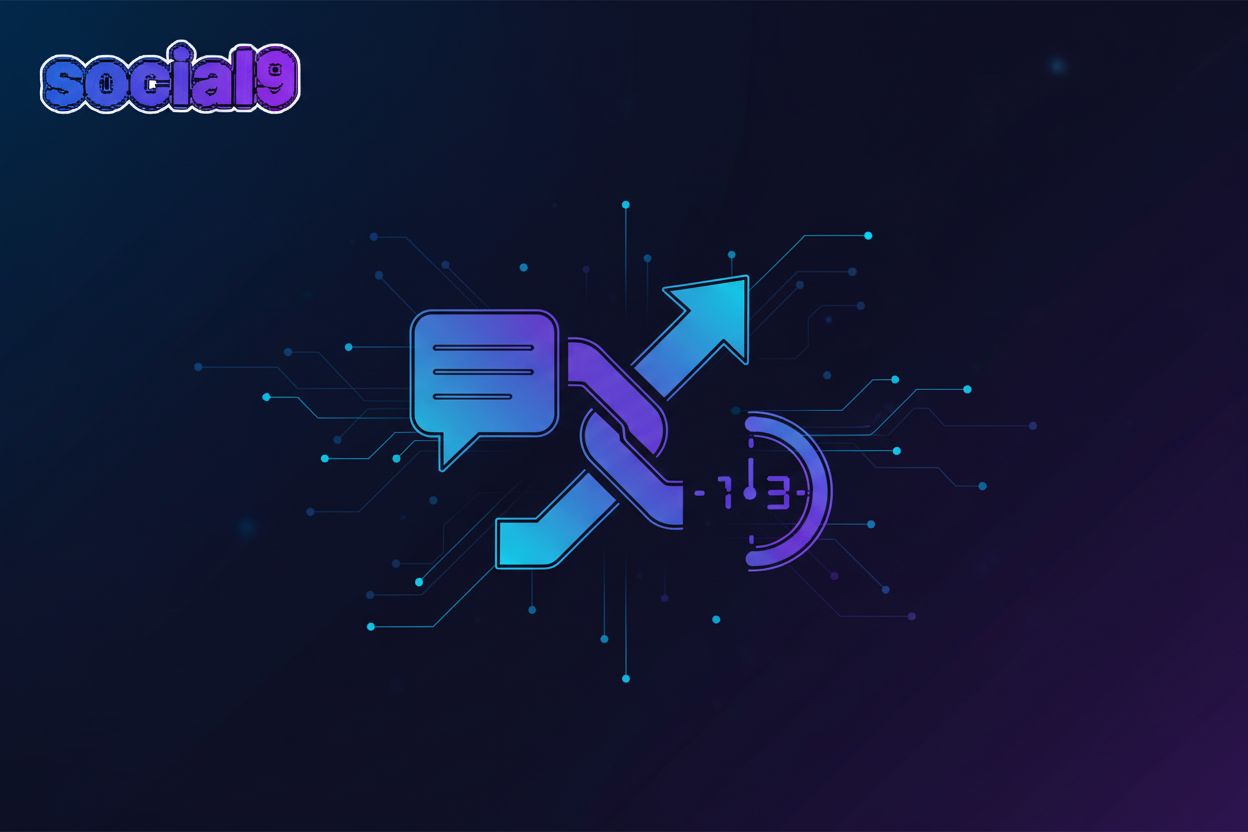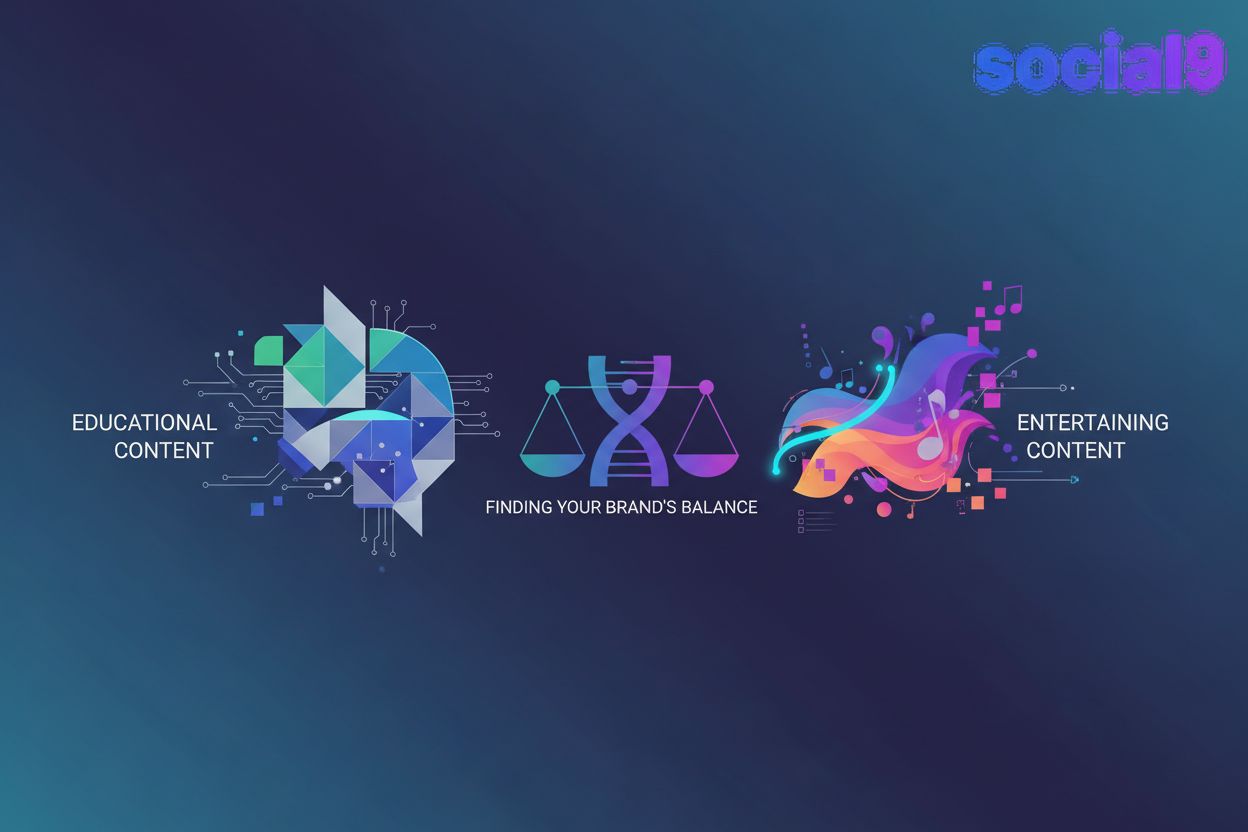Decoding Social Tribes: How AI Helps Content Creators Conquer Micro-Communities
TL;DR
The Rise of Social Tribes: Why Niche Communities Matter
Okay, so social tribes... it's kinda like high school, but online and way more specific, right? Remember trying to figure out where you fit back then? Now imagine that, but with, like, laser focus on a single shared passion.
Forget just knowing someone's age or where they live; that's old-school marketing. These days, it's all about psychographics: what makes people tick. What are their interests, values, and lifestyles? You gotta dig deep. Honestly, demographics alone are about as useful as a screen door on a submarine.
- Traditional demographics just scratches the surface, right? Like knowing someone buys coffee – great, but why do they buy it? Is it for the caffeine jolt, the social aspect, or because they're supporting fair trade?
- Psychographics are way more insightful. They help you understand the motivations behind the "what." It's about connecting with people on a deeper level.
- Shared values? That's the glue that holds these social tribes together. It’s that feeling of "hey, these are my people."
Think about a gaming community, for example. It's not just about playing games, is it? It could be a love for retro games, a shared frustration with microtransactions, or a passion for a specific type of gameplay. It's the values that create the bond.
Remember when everyone watched the same shows on TV? Yeah, that's gone. Now, there's a niche platform for everything. I mean, cat videos have, like, a dozen platforms dedicated to them alone.
- The internet ain't what it used to be, you know? Mass media's kinda fading, and niche platforms are popping up everywhere.
- Users are taking control too. They decide what they want to see and who they wanna hang with.
- Algorithms are only making this worse (or better, depending on how you look at it), prioritizing personalized content experiences.
Content creators gotta adapt—fast. It's not about shouting to the masses anymore; it's about whispering to the right ears. And you need ai to do that. The complexity and sheer volume of online conversations make traditional methods of understanding these groups insufficient. This is where advanced tools like AI become not just helpful, but essential for content creators aiming to truly connect with and engage these micro-communities.
Think about a small indie bookstore. Instead of trying to compete with Amazon on price, they could cultivate their own community. They could host local author events, start a book club focused on regional writers, and build a real connection with people who value that specific niche, you know? It's about creating an experience that goes beyond just selling books.
The internet has made it easier than ever for content creators to build and engage with these niche communities. It's just a matter of understanding how ai can help.
So, yeah, social tribes are the new black. But how do you actually find them? And, more importantly, how do you create content that resonates with their specific needs and desires? Well, that's what we'll chat about next...
AI to the Rescue: Tools for Identifying and Analyzing Social Tribes
Alright, so you're trying to find your social tribe soulmates online, huh? It's like searching for a needle in a haystack made of hashtags. Good thing ai can lend a hand.
Social listening is basically like being a fly on the wall – but, like, a super-powered, ai-driven fly. These tools let you monitor what people are saying about specific topics, brands, or even just general feelings. You can track brand mentions, relevant hashtags, and keywords, and get a sense of the overall buzz. It's not just about counting mentions, though; it's about understanding the why behind them.
- It's all about sentiment analysis. Does the online chatter lean positive, negative, or neutral? Are people stoked about your new product feature, or are they roasting it? Knowing the sentiment helps you gauge whether you're hitting the right notes with your target audience.
- Trend identification is another biggie. What topics are gaining traction within specific communities? What are the emerging pain points and unmet needs? Spotting these trends early can help you create content that's timely and relevant.
- You're really trying to understand those audience needs, pain points, and preferences. What are they struggling with? What are they passionate about? What kind of language do they use? This is all gold for crafting content that truly resonates.
Practical AI Tools for Social Listening:
- Brandwatch: A robust platform for social listening, consumer intelligence, and market research.
- Sprout Social: Offers social media management, listening, and analytics features.
- Mention: Tracks brand mentions across the web and social media.
Okay, so you've got a ton of text data from forums, comments, and reviews. Now what? That's where natural language processing (nlp) comes in. Think of it as a super-smart text analyzer. nlp can dissect all that unstructured text and pull out meaningful insights.
- Topic extraction is key. nlp algorithms can identify the core themes and subjects that are being discussed. This lets you zoom in on the most relevant conversations and understand what truly matters to the community.
- Language pattern analysis is pretty cool, too. nlp can uncover the specific language and phrases that are common within a community. Are there unique slang terms or inside jokes? This helps you speak their language and build rapport.
- Don't forget about cultural references. nlp can help you understand the subtle nuances and cultural references that might be flying over your head. This is crucial for avoiding missteps and showing that you "get" the community.
Practical AI Tools for NLP:
- Google Cloud Natural Language API: Provides advanced NLP capabilities for text analysis.
- OpenAI's GPT models (e.g., GPT-4): Can be used for a wide range of NLP tasks, including summarization, topic extraction, and content generation.
- MonkeyLearn: Offers no-code NLP tools for text analysis.
Alright, you've gathered all this intel. Now it's time to put it to use. Audience segmentation is all about grouping users based on shared characteristics, so you can tailor your content to their specific needs.
- ai-driven segmentation uses algorithms to automatically group users based on patterns in their behavior, interests, and demographics. This goes way beyond simple demographic segmentation and lets you create highly targeted audience segments.
- The goal is to create personalized content strategies for each segment. What kind of content will resonate most with this group? What tone of voice should you use? What format will they prefer?
- Content delivery optimization is the final piece of the puzzle. You need to make sure your content is reaching the right people at the right time. That means understanding their preferred platforms, engagement patterns, and optimal posting times.
By leveraging these AI tools, content creators can move beyond surface-level understanding to deeply analyze the nuances of social tribes, identifying their core interests, language, and values. This granular insight is precisely what allows creators to "conquer" these micro-communities by speaking directly to their needs and fostering genuine connection.
Let's say you're a healthcare company trying to reach a specific social tribe: people interested in holistic wellness. You could use social listening to track conversations around topics like "natural remedies," "mindfulness," and "organic food." NLP could then analyze these conversations to identify key themes, such as stress management, sleep optimization, and gut health. For instance, NLP could identify common questions about gut health, which could then be used to generate blog post ideas or even draft initial content outlines. Based on these insights, you could create targeted content like blog posts, infographics, and videos that address these specific needs.
You see, ai isn't just about automating tasks; it's about unlocking deeper insights and building more authentic connections. It's about understanding the nuances of human behavior and crafting content that truly resonates.
And that's how you take your newfound knowledge and actually make some content that hits home... which is exactly what we'll talk about next.
Crafting Authentic Content: Speaking the Language of Your Tribe
Okay, so you've got the ai tools to find your tribe, now what? You can't just barge in and start yelling about your product, right? It's like showing up to a potluck with only store-bought cookies—kinda defeats the purpose. You gotta speak their language and earn your place.
First thing's first: do your homework. I mean, seriously. Every community has its own set of unspoken rules, inside jokes, and pet peeves. You don't wanna be that person who accidentally insults everyone on your first post, do you?
- Research the specific norms, values, and etiquette of each community. Lurk for a while before you start posting. See what kind of content gets the most engagement. What language do they use? What topics are off-limits? It's like learning a new dialect, honestly.
- Avoid cultural appropriation, stereotypes, and offensive language. This should be a no-brainer, but it's worth repeating. Don't try to be something you're not, and for the love of all that is holy, don't use slang you don't understand. It'll just come off as cringey.
- Demonstrate respect for community traditions and beliefs. Whether it's a gaming forum, a knitting circle, or a political discussion group, show that you understand and appreciate their shared history and values. No one likes a know-it-all who thinks they're better than everyone else.
For example- say you're joining a vintage clothing forum. Don't start posting about the latest fast-fashion trends. Instead, share your knowledge of historical garment construction, ask questions about dating vintage pieces, and contribute to discussions about ethical sourcing. Ya know, prove you're one of them!
Alright, so you've done your research and you're ready to start engaging. Awesome. But remember, it's not about you; it's about the community. Think of it as building relationships, not just promoting stuff.
- Participate in community discussions and offer valuable insights. Share your expertise, answer questions, and contribute to the conversation. Be helpful, be genuine, and be patient. It's a marathon, not a sprint.
- Share authentic stories and experiences that resonate with the audience. People connect with people, not with faceless corporations. Show your human side, share your struggles, and be relatable.
- Collaborate with community influencers and thought leaders. Find the people who are already respected and trusted within the community and reach out to them. Ask for their advice, offer to collaborate on a project, and build a genuine connection.
- Demonstrate a genuine interest in the community's well-being. Show that you care about more than just selling your product or service. Support their initiatives, donate to their causes, and be a good neighbor.
Okay, so you're a financial advisor trying to connect with a community of young, first-time investors. Instead of pushing your services, you could share your own stories about overcoming financial challenges, offer free workshops on budgeting and saving, and participate in discussions about responsible investing. See?
Now, let's talk about content. Not everything works everywhere; you gotta adapt.
- Tailoring content to platform nuances:
- TikTok: Focus on short, engaging videos, trending sounds, and challenges. Authenticity and quick hooks are key.
- Instagram: Prioritize visually appealing content, stories for behind-the-scenes glimpses, and Reels for short-form video.
- YouTube: Ideal for longer-form, educational content, tutorials, and in-depth discussions.
- LinkedIn: Professional, insightful content, industry news, and thought leadership pieces work best.
- Adapting content formats to suit the preferences of each community. Some communities love long-form articles, while others prefer short, punchy videos. Pay attention to what gets the most engagement and tailor your content accordingly.
- Experimenting with different types of content (e.g., video, articles, infographics, podcasts). Don't be afraid to try new things. Test different formats and see what resonates best with your audience.
Let's say you're a retail company targeting a community of sustainable living enthusiasts. You could create short, engaging videos for tiktok showcasing your eco-friendly products, write long-form articles for a niche blog detailing your sustainable manufacturing processes, or create infographics for instagram highlighting the environmental benefits of your products. By understanding the specific platforms and content preferences identified through AI analysis, creators can ensure their authentic messages land effectively within their target micro-communities.
Speaking the language of your tribe isn't rocket science. It's about understanding their values, respecting their norms, and creating content that actually resonates with them. Fail to do that and you'll just be another face in the crowd that gets completely ignored.
Next up, we'll dive into ways ai can help you keep the conversation flowing.
Measuring Success and Iterating: Using Analytics to Refine Your Approach
Alright, so you've put in the work to understand your social tribe; you're speaking their language, and now you need to know if it's even working. Are you just shouting into the void, or are you actually making a connection? Let's see how to measure the results.
It's not just about vanity metrics, you know? Likes and follows are cool, but they don't always translate to real engagement or community growth. Gotta dig a little deeper than that.
- Website Traffic and Behavior: Are people clicking through from your social content to your website? What are they doing when they get there? Time on page, bounce rate, and conversion rates can tell you if your content is actually driving meaningful action.
- Social Media Engagement: Yeah, likes and shares matter some, but pay attention to comments and mentions too. Are people starting conversations? Are they tagging their friends? Are they sharing your content outside of the platform? That’s where the real magic happens.
- Community Participation: If you've got a forum, a discord server, or even just a comments section, are people actively participating? Are they asking questions, sharing their own experiences, and helping each other out? That's a sign you're building a real community, not just an audience.
Don't be afraid to experiment. What works for one tribe might totally flop with another. A/B testing is your friend here.
A/B Testing Process for Micro-Communities:
- Define your hypothesis: What specific change do you want to test, and what outcome do you expect? (e.g., "Testing a more direct call to action will increase forum replies.")
- Create variations: Develop two versions of your content (A and B) that differ by only one element.
- Target your audience: Ensure both versions are shown to similar segments of your micro-community.
- Run the test: Deploy both versions simultaneously for a defined period.
- Analyze results: Compare the performance metrics (e.g., click-through rates, engagement, replies) for each version.
- Iterate: Implement the winning variation and plan your next test.
Headlines and Calls to Action: Try different headlines, different calls to action, and different formats. See what gets the most clicks, the most shares, and the most comments. For example, in a forum post, you could test:
- Version A: "What are your thoughts on the new update?"
- Version B: "Share your experience with the new update! We're listening."
Content Formats: Some tribes love long-form articles, while others prefer short, punchy videos. Experiment with different formats and see what resonates.
Delivery Channels and Timing: Are you posting on the right platforms? At the right times? Use your analytics to figure out when your audience is most active and engaged.
Let's say you're running a campaign for a new line of sustainable clothing. You could test two different headlines for your Facebook ad: "Shop Sustainable Style That Saves the Planet" vs. "Look Good, Feel Good, Do Good: Eco-Friendly Clothing." Or you could test posting a video on tiktok vs. an infographic on Instagram. See what sticks!
Once you've got some data, it's time to iterate. What's working? Do more of that. Ditch it and try something new. It's a constant cycle of testing, learning, and refining: a good content creator is always pivoting. AI-powered analytics can help identify these patterns and suggest optimizations, allowing creators to continuously refine their approach and deepen their connection with micro-communities.
So, yeah, analytics might sound boring, but they're actually your secret weapon for building a thriving social tribe. Now, let's talk about how to use all this to keep that community engaged long term...
The Ethical Compass: Navigating AI and Subcultures Responsibly
Alright, so we've been talking about social tribes and ai, but let's not forget that with great power comes, well, you know the rest. It's easy to get caught up in the tech, but it's way important to remember the human side of things.
Using ai to understand subcultures isn't a free pass to be creepy or manipulative. People aren't just data points; they're real folks with feelings and values.
- Data privacy is huge. You can't just hoover up every bit of info you can find. Make sure you're following regulations like gdpr or ccpa. And tell people clearly how you're using their data. No one likes surprises, especially when it comes to their personal info.
- Practical Tips for Data Privacy:
- Anonymize data: Remove personally identifiable information (PII) whenever possible.
- Use opt-in mechanisms: Clearly ask for consent before collecting data, especially for sensitive information.
- Be transparent: Have a clear and accessible privacy policy explaining data collection and usage.
- Secure your data: Implement robust security measures to protect collected information.
- Practical Tips for Data Privacy:
- Transparency is also key. Don't hide the fact that you're using ai to personalize content. People deserve to know how things work. It's about building trust, not tricking them.
- Informed consent is non-negotiable. Get permission before you start collecting and using data. It's just basic respect, you know?
Like, imagine a healthcare company using ai to understand the needs of a chronic illness support group. It is super important to clearly disclose how that data is collected and used in a privacy policy. It's not hard to do, and it makes a big difference.
ai isn't some neutral, objective thing. Algorithms can be biased, and if you're not careful, you can end up reinforcing stereotypes and discrimination.
- Mitigating AI Bias:
- Audit algorithms and datasets: Regularly check for biases in the data AI learns from and in the algorithms themselves.
- Promote diversity and inclusion: Ensure your content and community engagement reflect a range of perspectives. Don't just cater to one narrow slice of the population.
- Human oversight: Always have a human review AI-generated content and decisions to catch potential biases or errors.
- Test with diverse groups: When developing AI tools or content strategies, test them with a wide range of users to identify unintended consequences.
- Steer clear of harmful stereotypes. This should be super obvious, but it's worth saying. Don't perpetuate damaging tropes or discriminatory practices.
Let's say you're running a campaign for a new product, you need to make sure that ad copy isn't using language that excludes or offends certain groups. It's a simple thing, but it matters a lot.
ai is a tool, and like any tool, it can be used for good or bad. It's up to us to make sure we're using it responsibly and ethically. By prioritizing data privacy, avoiding bias, and promoting inclusion, we can build a better, more connected world for everyone. Don't forget the people in the process.





